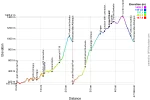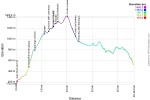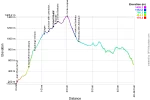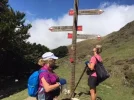Curiosity
New Member
- Time of past OR future Camino
- May 2016
Hi all!
First of all; this forum rocks! It's extremely helpfull during the preparation for my first Camino, starting on May 10th. Thank you so much, so far.
My biggest concern at this moment is the first stretch to Roncessvalles. I'm planning on staying at Orrisson to cut myself some slack and it seems to ge great experience. But still... I saw some great footage on YouTube and was under the impression that it was gradually steep. After reading some threads here on the forum I start to doubt. Shouldn't I take the Valcarlosroute? I don't want to wear myself out during the first two days nor take a restingday in Roncessvalles. I live in the Netherlands, it's quite difficult to train uphill, since we have no hills or mountains of Amy significance.
I'm reasonably fit, I can walk 20 k's in a day, but I'd still like to hear any opinion about these first two days.
Monique
First of all; this forum rocks! It's extremely helpfull during the preparation for my first Camino, starting on May 10th. Thank you so much, so far.
My biggest concern at this moment is the first stretch to Roncessvalles. I'm planning on staying at Orrisson to cut myself some slack and it seems to ge great experience. But still... I saw some great footage on YouTube and was under the impression that it was gradually steep. After reading some threads here on the forum I start to doubt. Shouldn't I take the Valcarlosroute? I don't want to wear myself out during the first two days nor take a restingday in Roncessvalles. I live in the Netherlands, it's quite difficult to train uphill, since we have no hills or mountains of Amy significance.
I'm reasonably fit, I can walk 20 k's in a day, but I'd still like to hear any opinion about these first two days.
Monique






























